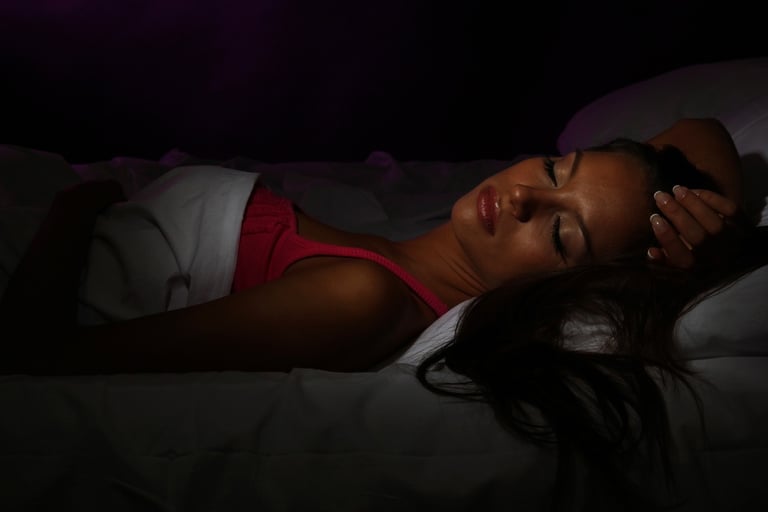
If you work a job with hours that fall outside the traditional 9 to 5 work day — for example, an overnight shift/graveyard shift, a double shift, or if your schedule rotates often — you may find yourself struggling with excessive daytime sleepiness or insomnia. If your problems sleeping or feeling rested are persistent or even daily, you may have what’s called shift work sleep disorder.
Shift work sleep disorder (SWSD) occurs when your body’s natural circadian rhythms come into conflict with the hours that you need to be awake or asleep. Unlike most working people, you may need to be awake when it’s dark outside and asleep during daylight hours. Your body needs to adapt to a schedule that’s contrary to its default setting. This sleep disorder can be difficult to contend with, but there are methods you can use to help get a better night’s rest.
Who gets shift work sleep disorder (SWSD)?
Anyone with a job requiring shift work — about 15% of American workers, according to the National Sleep Foundation (NSF) —may develop this circadian rhythm sleep disorder (sometimes referred to as “shift work syndrome”). People with frequently changing schedules are also at risk for difficulty sleeping: for example, healthcare professionals (who often stay awake for 12 or even 24 hours at a time) and airplane crews. In fact, over one-third of all shift workers polled by the National Sleep Foundation feel they aren’t getting enough sleep during the week.
Workers who sometimes develop shift work sleep disorder include:
- airplane crew (pilots, flight attendants)

- conductors (subways, trains)
- drivers (bus, cab, limousine)
- firefighters
- food preparers, bakers, and restaurant cooks
- military personnel
- nurses, doctors, ambulance drivers, and EMTs
- night security staff/security guards
- overnight staff (third shift/graveyard shift workers)
- police officers
It’s not only the graveyard shift that’s a problem. Even those working early mornings or afternoon/evening shifts may be susceptible to problems. Overall, an estimated 10% of all shift workers have been diagnosed with shift work disorder, and up to 30% display the symptoms — including insomnia and excessive drowsiness — at least part of the time.
Symptoms of SWSD
How will you know if you have SWSD? The symptoms of a shift work sleep disorder are similar to the effects of jet lag.
- “Short” sleep. You’re sleeping, but not long enough. Shift workers often wake after only 4 to 6 hours instead of the recommended 7 to 9 hours.
- You struggle to fall asleep or to stay asleep.
- Poor quality sleep. You wake up tired and unrefreshed.
- Chronic sleep debt. As a shift worker, you’re likely getting less sleep than you need on a regular basis. This sleep debt accrues, making it difficult for you to repay your debt. (And binge sleeping on days off can throw your body clock off even further.)
- Excessive daytime sleepiness. You’re extremely sleepy all day and are constantly fighting off drowsiness. You may even be experiencing “microsleeps” — 1 to 3 second sleep sessions — without realizing it. Microsleeps are potentially hazardous for people who drive, work on assembly lines, or operate heavy machinery.
- Mood changes. You experience irritability, anxiety, or depression. These mood fluctuations may be negatively affecting your personal relationships.
- Concentration problems. You have trouble focusing or completing tasks.
- Low energy. You feel physically or mentally exhausted.
Shift work: health effects
Shift work is a part of life for millions of Americans. It has its benefits, usually including higher pay and less traffic during commuting hours. However, for some people who have trouble adjusting, the negative health effects of losing sleep outweigh the benefits.
In the short-term, you may experience insomnia, GI problems like nausea or upset stomach, daytime sleepiness, malaise, and depression. Some of these issues result from sleep deprivation as you adjust to your new schedule. Others can be psychological. The stress of being asleep when everyone else in your life is awake can take an emotional toll.
Long-term, the effects of maintaining an atypical sleep/wake cycle may lead to your body producing less melatonin. This, in combination with lifestyle factors like not getting to the gym or eating well, can lead to health problems like obesity, diabetes, a higher risk of heart disease, lowered immunity, fertility problems, and mood disorders.
How to treat shift work disorder
Shift work disorder doesn’t have to be with you forever. Practicing good sleep hygiene can help you to adapt to your schedule and improve the conditions for sleep. Some practical tips to help improve the quality of your sleep:

- Keep your bedroom dark and quiet. To block out sunlight, use blackout drapes and wear an eye mask. Keep bright digital devices out of the bedroom, too — the pulsing lights and blue light may stimulate you to stay awake. Keep your room cool and quiet, and use a white noise machine and ear plugs to drown out any disruptive daytime sounds.
- Protect your sleep hours. Hang a “do not disturb” sign on your door. Talk to family members and ask them not to wake you unless absolutely necessary. Turn off your phone or put it on vibrate.
- Limit caffeine and alcohol. Stop drinking both within 3 hours of bedtime — they can dehydrate you, interfering with the quality of your sleep. Caffeine also has a long half-life and will stay in your system for at least six hours, shortening REM sleep; plus it’s a diuretic, which means more trips to the bathroom in the night.
- Exercise regularly. Studies suggest that daily, moderate exercise may help with chronic insomnia by decreasing the amount of time it takes you to fall asleep. Some experts theorize that the temporary spike in body temperature, followed by a decrease, may trigger your body to get drowsy. A moderate workout before you go to work or right after your work shift ends may be helpful in promoting better quality sleep. Gentle stretching or yoga before bed can also be beneficial.
- Pack a healthy lunch. Shift workers, especially those working the graveyard shift, often have trouble finding nutritious dining options open during irregular hours. To avoid the temptation of fast food or vending machine dinners, plan ahead and pack a well-balanced meal. Eating a small, sleep-friendly snack half an hour to an hour before bed can also help to boost melatonin production.
- Nap during the day. If you can, taking brief naps (10 to 30 minutes) during your work breaks can help to combat daytime drowsiness.
- Limit your daylight exposure. If you work a night shift that ends in the morning, wear sunglasses when you drive home. Exposure to daylight suppresses melatonin production and tricks your body into staying awake.
If you’re still struggling to regulate your sleep after making these changes, ask your doctor for advice regarding melatonin supplements or other medications. A sleep study may also be helpful in ruling out other conditions or disorders. Finally, you may want to talk to your work supervisor about accommodations, like “shifting forward” or taking daytime naps, that allow you get more rest and stay safer on the job.
Call Sleep Resolutions in Garden City or Dodge City, Kansas for help with your shift work sleep issues today at 866-758-9400.
Sources:
National Sleep Foundation:
https://sleepfoundation.org/shift-work/content/what-shift-work
https://sleepfoundation.org/shift-work/content/shift-work-disorder-%E2%80%93-symptoms









Leave a comment